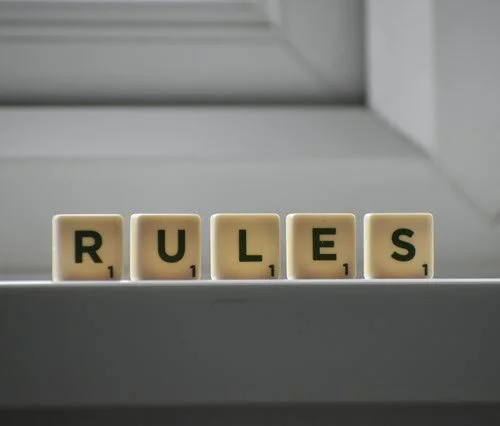Seven Rules for Marketing Success
Your marketing will be easier, more effective, and successful if you follow these seven rules.
1. THE BECKFORD RULE
United Ways seem to keep doing more and more things. The challenge lies in the ability to communicate all the things that you do and all the people you help. Pamela Beckford, the now retired executive director of United Way of Wells County (Bluffton, IN) summed it up this way: “It is better to be known for one thing than to be known for nothing.”
Too many messages are overwhelming. Fewer messages, repeated often, will make it easier for people to understand what your United Way does. All of your messages should be consistent whether they come from your president/CEO, staff, board members, employee campaign coordinators, or volunteers.
Choose the one thing you want your United Way to be known for, and message accordingly.
2. USE YOU-YOUR NOT WE-OUR
When you use words like “we” and “our” in your campaign materials, social media, website, campaign presentations, etc., you are typically referring to your United Way. For example, in phrases like “We fund 47 partner agencies and 56 programs” or “We help 137,678 people every year” the word “we” is referring to your United Way – not your donor.
If you want a donor to support your United Way, you need to talk about your donor. When you use words like “you” and “your,” you are including the donor in your work. Here are two examples of using “your” instead of “we”: “Your contribution will provide essential funding to 47 partner agencies and 56 programs” or “Your donation will help over 137,000 people this year.”
Replace “we” and “our” with “you” and “your.”
3. THE BIG 3: ISSUE-ACTIONS-RESULTS
The easiest way to help people understand what it is your United Way does is through I-A-R. “I” stands for issue. You need to first tell your donors what issue (or issues) you are working on. For example, let’s say your United Way runs Dolly Parton’s Imagination Library. Your issue would be early childhood literacy. “A” stands for actions. Your donor needs to know what actions you are taking to impact your issue. In our example, the action you are taking is through Dolly Parton’s Imagination Library. “R” stands for results. After you tell your donors what actions you are taking to impact the issue, you need to tell them what the results of that action are. So, for our example, we would say that the results are that 500 children received books.
Always communicate your issue, actions, and results.
4. SHARE PEOPLE, HIDE PROCESSES
United Ways have never been shy about talking process. United Ways use a lot of processes for all sorts of things such as workplace campaigns, allocations, volunteering, outcomes evaluation, community impact, collective impact, and grants. Surrounded by all of these processes, many United Ways have fallen into the trap of talking about their processes – or “how the sausages are made.”
Instead of talking about your processes, talk about people. Share how many people were helped or even better, how many people no longer need help. For example, 34 families have found a permanent home and are no longer homeless. Tell the story of someone whose life was transformed by the work of United Way. For example, share the story of how Mariah was able to complete her GED and earn her CNA due to the support of donors like you.
Talking about people is more memorable than talking about processes.
5. STOP LIVING IN THE PAST
Donors do not live in the past, but United Ways often do when they talk about all the programs they funded last year. Your donor wants to change lives now, not fund last year’s work. Your donors picture helping a single mother earn her GED and become financially stable now. They are not picturing giving to support programs that happened last year.
Ask your donor to support what they will accomplish this year with their contribution. For example, “With your help, 17 homeless families will move into permanent housing this year” or “With your $30 contribution, a child in our community will receive a book every month from Dolly Parton’s Imagination Library.”
Share what will happen, not what happened last year.
6. USE STATISTICS AND STORIES
Some people are analytical and think of things in terms of statistics and percentages, and those people need to know the statistics that quantify the difference you made. They are the ones who will ask you questions like, “How many people did you help this year?” and “What percentage of kids who attended your summer learning camp are now reading on grade level?” Other people tend to prefer stories of those who were helped. People want to be able to connect with the story of another person in their community who benefited from their donation. Story lovers are asking, “Who did I help?”
Select one program you fund or operate and provide one or two statistics about the impact of that program. Then share a success story from that program that could not have taken place without their donation.
Include both statistics and stories so that everyone receives meaningful information about your United Way.
7. MAKE IT YOUR DONOR’S GOAL
Our donor research has found over and over again that donors do not care about your campaign goal – it does not motivate a donor to give or increase their contribution, most donors do not want to be updated about the campaign goal, and many donors do not even care if you reach your campaign goal. Why? Because your campaign goal is your United Way’s goal, not your donor’s goal.
Over thirty-five years of donor research with local United Way donors has found that the donor’s goal is to change lives in their community. Donors want to know that their contribution has helped a child enter kindergarten ready to learn, provided a homeless family permanent housing, or allowed a single mother to finish her GED, find a job, and become financially stable.
Paint a picture of how supporting United Way will help your donor achieve their goal.




